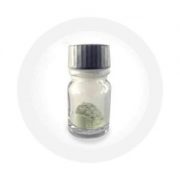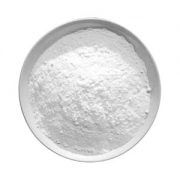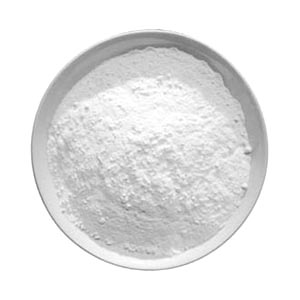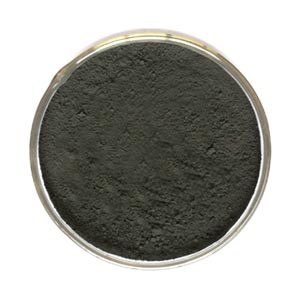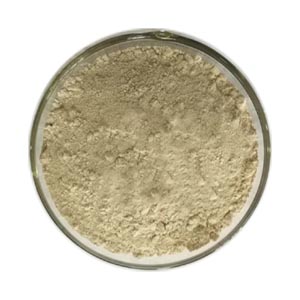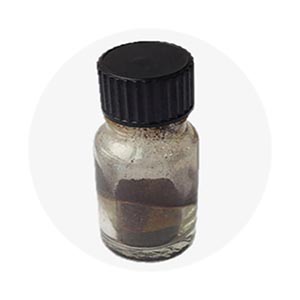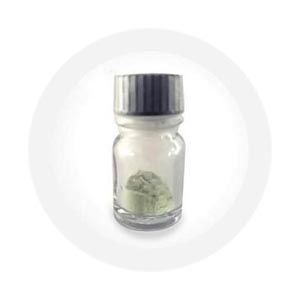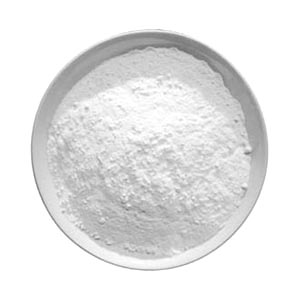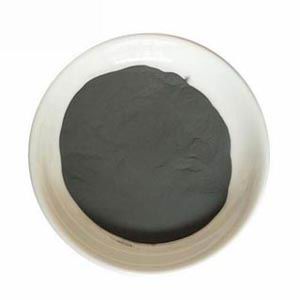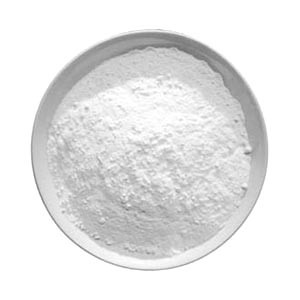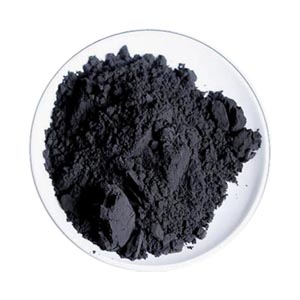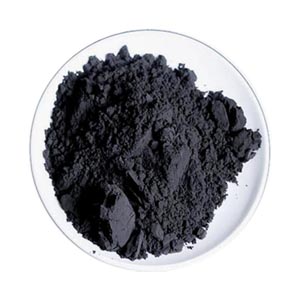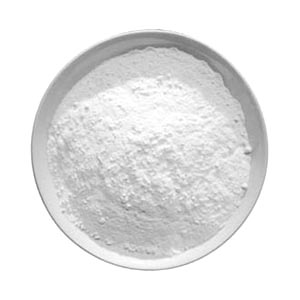
Tellurium tetrachloride
Other name: Tellurium(IV) chloride, tetrachloro-lambda~4~-tellane
CAS no. : 10026-07-0
EINECS no. : 233-055-6
Molecular formula: H6Cl4Te.
Molecular weight: 275.4596
Melting point : 224 ° c.
The boiling point: 380 ° c.
- 描述
- Related Info.
- Inquiry
Appearance: white deliquescent powder
Purity: 99.99%, 99.999%
Particle size: 60mesh, 200mesh
Mass Percent: Cl 52.64%, Te 47.36%
Density (g / mL, 25 ° C): 2.95
Relative density (water = 1): 3.260
Dipole moment: 2.59 D (gas phase)
Polarizability: 10-24cm3
Packing protection: nitrogen or argon protection
Tellurium tetrachloride is a white crystalline inorganic compound that is very deliquescent with white to light yellow or light gray in the air. Insoluble in carbon disulfide, soluble in water, hydrochloric acid, benzene, ethanol, chloroform and carbon tetrachloride, in water decomposition of tellurium dioxide and hydrochloric acid.
Applications:
TeCl4 has proven of occasional interest in organic synthesis. It adds to alkenes to give Cl-C-C-TeCl3 derivatives, wherein the Te can be subsequently removed with sodium sulfide. Electron-rich arenes react to give aryl Te compounds. Thus anisole give TeCl2(C6H4OMe)2, which can be reduced to the diaryl telluride. It also can be used in tellurium compounds and chemical reagent.
About Tellurium Tetrachloride
Tellurium Tetrachloride is the inorganic compound prepared by chlorination of tellurium powder ( Te + 2 Cl2 → TeCl4 ). The reaction is initiated with heat. When chlorine is passed continually over carefully heated tellurium, the final product is a yellow liquid of Tellurium Tetrachloride, TeCl4, which solidifies to a crystalline mass on cooling. It can be purified by distillation. TeCl4 is easy deliquescence, turns light yellow or durk yellow exposed to the air. It melts at 225℃. to a yellow liquid, the colour of which deepens as the boiling- point, 390℃, is approached. The vapour is yellow and at 440℃ has a density agreeing closely with the formula TeCl4, although above 500℃ appreciable dissociation occurs, probably into the dichloride and chlorine.
About the preparation method
Direct chlorination from tellurium system.
Preparation of TeCl4 The synthesis reaction was carried out in an apparatus as shown in the figure, which was made of Jena glass and the parts of the apparatus were welded together, wherein the number of ampoules 1 was determined according to the number of samples desired by the experimenter. Figure Preparation of TeCl4 Before the start of the synthesis experiment, the device was dried in an oven for 12h, while hot 50g of pulverized pure tellurium was charged into flask 2 from 3 and 3 and 4 were closed. A vacuum was then applied from 5 while the entire unit was heated with a swaying gas lamp flame to remove the last remaining mist attached to the wall of the unit. After cooling, remove it from the vacuum system and pass dry nitrogen-free oxygen from 4 to purge the air in the unit. Then slowly pass dry, oxygen-free chlorine gas and carefully heat the flask 2 with a gas lamp to stop heating when the reaction is started. After a period of reaction, the contents of the flask became liquid, starting to black, then dark red, and finally to amber yellow. The flask 2 may be slightly heated at the end of the reaction. When the product becomes pure yellow, it can be slightly heated while flowing Cl2 + HCl mixed gas for a period of time, so that the possible formation of chlorine oxide decomposition. Finally, with slow passage of chlorine, the product is heated in a flaming gas lamp and the product is distilled into ampoules and the ampoules are sealed.
Precautions for use
Overview of danger
Health hazards: The product is generated when the hydrogen chloride gas, corrosive and toxic. At 0.1mg / m3 concentration above, the contacts can be poisoned. Contact and poisoning, the breath of serious garlic smell.
Environmental hazards: the environment may be harmful to the water can cause pollution.
Explosion hazard: This product is non-flammable, toxic.
first-aid
Skin contact: Remove contaminated clothing and rinse with plenty of running water.
Eye contact: Lift the eyelids, rinse with running water or saline. Get medical attention.
Inhalation: Get out of the air quickly to fresh air. Keep the airway clear. If breathing is difficult, give oxygen. If breathing stops, give artificial respiration immediately. Get medical attention.
Ingestion: drink enough warm water, induce vomiting. Get medical attention.
Fire-fighting measures
Hazardous characteristics: water or water vapor reaction heat and produce toxic corrosive gases. High heat decomposition in case of highly toxic fumes.
Harmful combustion products: hydrogen chloride, cry.
Fire fighting methods: As far as possible the container from the fire to empty place.
Extinguishing agent: dry powder, carbon dioxide, sand. Do not use water and foam to extinguish fire.
Spill emergency treatment
Emergency treatment: isolation leakage contaminated area, limit access. Recommended emergency personnel wearing a dust mask, wear protective clothing. Do not touch the spill directly.
A small amount of leakage: to avoid dust, carefully swept away, collected in dry, clean, covered containers.
A large number of leaks: Collection and recovery or shipped to the disposal of waste disposal sites.
Handling and storage
Operational Notes: Closed operation, local exhaust. Prevent the release of dust to the workshop air. Operators must undergo specialized training, strictly abide by the rules. It is recommended that operators wear self-priming filtered respirators, wear chemical safety goggles, wear rubber suits, wear latex gloves. Avoid producing dust. Avoid contact with bases and ammonia. In particular, care should be taken to avoid contact with water. Equipped with leak emergency treatment equipment. Empty containers may be harmful residues.
Storage Notes: Store in a cool, dry, well-ventilated warehouse. Keep away from fire and heat. Prevent direct sunlight. Packing sealed. Should be separated from alkali, ammonia, food chemicals, avoid mixing reservoir. Storage area should be equipped with suitable materials to contain spills.
相关产品
-
Ammonium perrhenate
Purity: 4N, 5N
4N: NH4ReO4≥99.99% , Re ≥69.4%
Appearance : white flake crystal.
Application: rhenium compound standard sample; Rhenium addition; Production of rhenium metal products, rhenium alloy and rhenium compounds raw materials. -
Rhenium dioxide ReO2
Specification: ReO2≥99.99%, Re≥85.33%
Impurity:<100ppm
Appearance: black gray particulate matter. -
Lanthanum strontium gallium magnesium oxide
Lanthanum strontium gallium magnesium oxide (LSGM) is a ceramic electrolyte material with high ionic conductivity. LSGM is used as an electrolyte membrane to improve SOFC performance or reduce operating temperature. The ionic conductivity of LSGM is about twice that of yttrium-stabilized zirconia (YSZ-8). This LSGM powder is ideal for use in casting, ink formulation, pelletizing and other ceramic manufacturing processes.
-
Rhenium trichloride
Rhenium trichloride ReCl3 Re≥35% Purity: 99%
Properties: Dark red or purple crystals. Melting point 727℃. Boiling point 800 ~ 850℃. 500℃ vacuum sublimation, vapor green. Soluble in water, acid, base, liquid ammonia and ethanol, slightly soluble in ether. -
Dirhenium heptaoxide
Other name: Rhenium(VII) oxide; trioxo-(trioxorheniooxy)rhenium; trioxo(trioxorheniooxy)rhenium
CAS no. : 1314-68-7
EINECS no. : 215-241-9
Molecular formula: O7Re2
Molecular weight: 484.4098
Density: 6.103 g/mLat 25 ° C (lit.)
Melting point: 220 ° C (lit.)
Boiling point: 360 ° C (lit.)
Flash: 360 ° C
-
Indium chloride
Purity: 99.99%~99.999%
Physical characteristics: Indium chloride is a white crystal with delihability, very soluble in water, slightly soluble in ethanol and ether. Melting point: 262℃ Boiling point: 300℃ Density: 3.46g/cm³ -
Digallium triselenide powder
English alias: Gallium (III) selenide; gallium selenide (2: 3)
CAS number: 12024-24-7
EINECS No. 234-693-8
Molecular formula: Ga2Se3
Molecular weight: 376.326
-
Gallium trichloride
English alias:; Gallium (III) chloride ,Gallium chloride anhydrous; Gallium chloride
CAS number: 13450-90-3
EINECS number: 236-610-0
Molecular formula: Cl3Ga
Molecular weight: 176.082
Steam pressure: 33900 mmHg at 25 ° C
-
Indium telluride
Other name: indium(iii) telluride
CAS no. : 1312-45-4
EINECS no. : 215-194-4
Molecular formula: In2Te3
Molecular weight: 612.44
Density (g/mL,25℃) : 5.78
Melting point (oC) : 667 -
Diindium triselenide
Other name: indium selenide ,Indium(III)selenide, indium selenide (2:3)
CAS no. : 12056-07-4
EINECS no. : 235-016-9
Formula: In2Se3
Molecular weight: 466.516
Density :5.80 g/cm³

